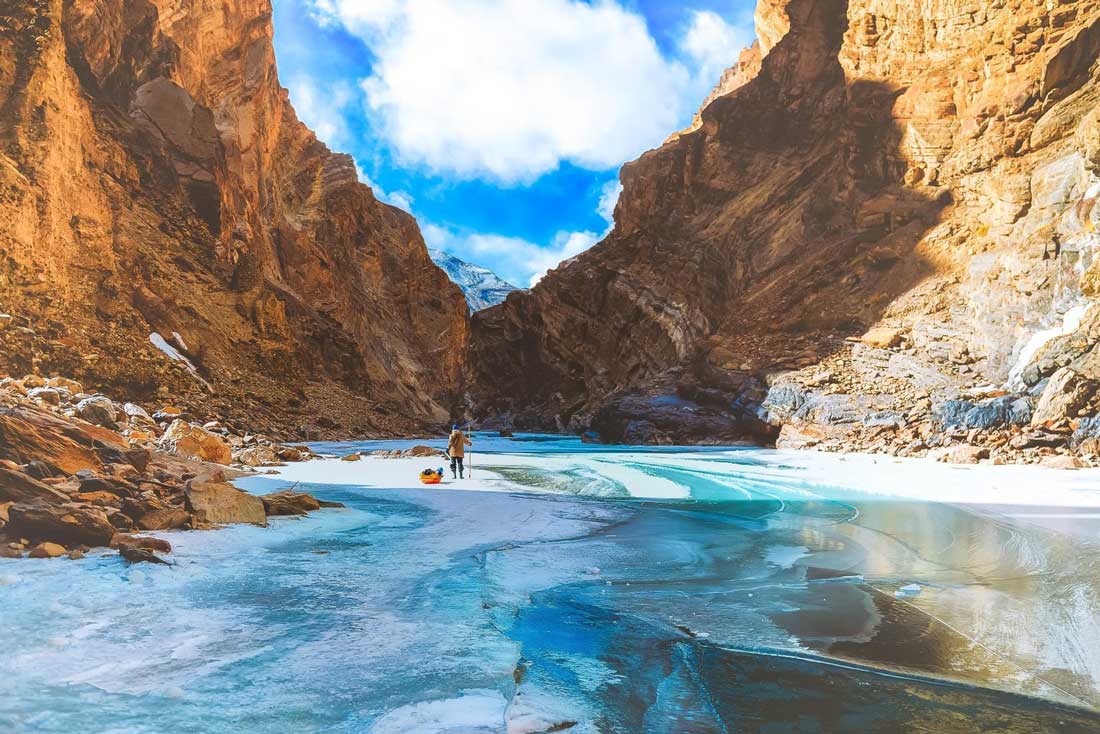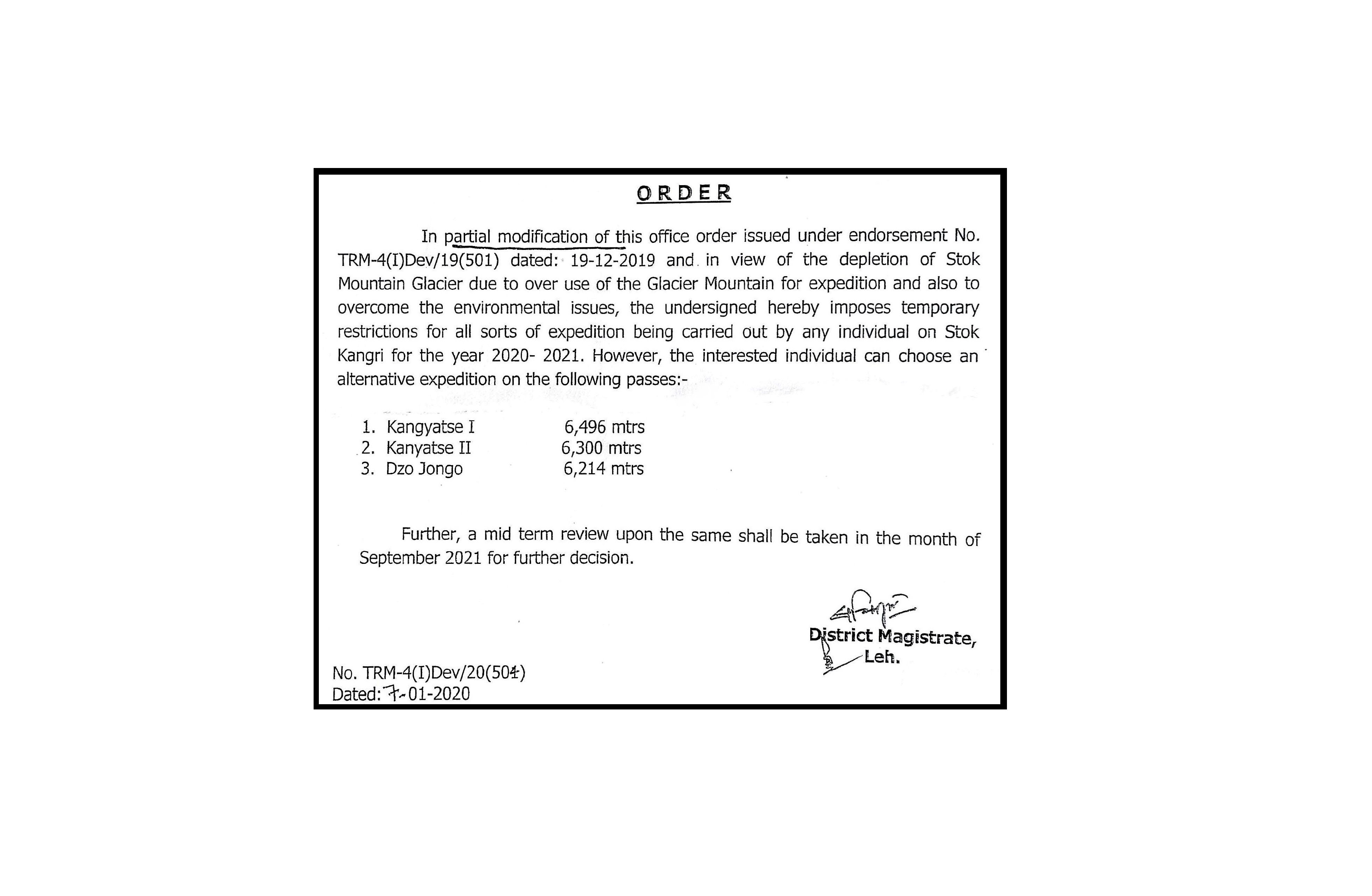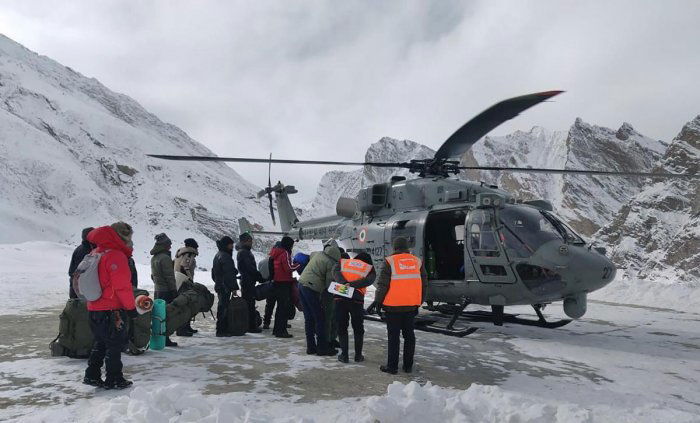
I have never done Chadar Trek and it is high up on my bucket list. My brother Karan keeps saying 'chadar karna hai yaar, kab karenge?' As we have already planned Island Peak for 2023 I thought 2024 would be a good option. So I started reading about it. One thing led to another and I kept stumbling upon several issues being faced by trekkers, local administration and people of the region.
We have to talk about these issues. Let's get into it...
The Good Old Days
Zanskar is the last remaining original Tibetan Buddhist society with a continuous untainted lineage dating back thousands of years. A high altitude semi-desert tehsil in Kargil district of Ladakh. According to the population survey of 2020, close to 20000 people live here.
The Zanskaris are one of the oldest population of the country and have an interesting mix of Tibetan and Indo-European roots. There are several scattered villages in the region, largest being Padum that has around 700 inhabitants.
At 4000 m it is difficult to find cultivable land so the Zanskaris have developed a system of intensive agriculture and complex irrigation to produce enough food in these conditions. In the summers, they rear animals. Milk, eggs, fiber, skin and other products. Come winter and Zanskar is cut off from the rest of the world.
Zanskar River, the hero of our movie today is a major tributary of the Indus River that flows entirely in Ladakh. Don't feel bad if you didn't know this, I just found out too. Benefits of writing a well researched newsletter!
As temperatures begin to drop in the winters, the locals wait for nature to take its course and form a thick layer of ice (i.e. Chadar) on top of the river. For centuries, the local men walked along the frozen river carrying their animal bi-products on sledge to Leh. A 145 km long stretch with temperatures falling to -10 degree celsius will make you want to move out of the valley, yet the Zanskaris did this annual trek every single year.
They would sell goatskin, butter and copper utensils in exchange for items to help them survive the harsh Ladakh winters.
The frozen Zanskar River is the only lifeline between Padum and Leh when roads are closed in winter.
Get premium content in your inbox, free. Sign up for my weekly newsletter.
How Did We Get Into This Mess?
In 2010 a documentary was made 'Journey From Zanskar' on how on the instructions of the Holy Dalai Lama two monks have been given the responsibility of preserving the Tibetan culture. They guide 17 children across high altitude passes on foot to reach Manali where the students will learn the language, culture and religious practices and return home after 15 years.
In 2011 the BBC released the famous documentary 'Human Planet'. In episode # 6 focusing on mountains, there was a short feature on Zanskar River. It showed how a father takes his two children across the frozen river on a 100 km trek to school.
The later documentary having a wider viewership across the globe suddenly led to a media and trek operator frenzy packaging and selling the frozen river trek as "Chadar Trek". Newspapers, magazines, international blogs wrote about how this is a 'must do before you die' adventure.
Selling the Chadar trek to adventure seekers like you and me was easy. Who doesn't want to walk through a gorgeous gorge with frozen waterfalls on a sheet of ice mirroring the sky?
Within a few years, thousand trekkers per day started flooding the frozen river that was once travelled by a handful of Zanskaris. Imagine, for a second, what happens when you keep opening your freezer. You can't expect ice to form in the ice tray, right? Same thing is happening on the Zanskar River. The human density has reached a level where the thickness of ice has reduced and number of accidents has increased.
With trekkers also comes human waste and trash, quickly polluting the pristine ecology. Add in a huge percentage of folks who think trekking is going on a vacation and you have the perfect recipe for disaster.
You might be wondering how a seasonal tourism activity lead to large scale pollution. Well, let me tell you.
A few hundred kms from Zanskar on the other side of the mountain range lies the famous Stok Kangri mountain. If you've ever been to Leh you have seen it. It's hard to not see it, it's visible from everywhere in the city.
Since it's a challenging high altitude peak it has passionate fans all over the globe. I've been there twice. In January 2020, the District Magistrate shut down all adventure operations in Stok Kangri due to the damage been done to it's glacier from overuse. Human waste, trash, plastic left up there in the mountains makes it way into the water flowing downstream to the villages. We are not welcome there anymore.
My estimate is that it will take another 2-3 years before the officials open Stok again. It will probably bring a new set of guidelines like limited number of trekkers allowed per day.
Why do you think Kang Yatse brothers have been pulling so much crowd lately?
Get access to premium content, free. Sign up for my weekly newsletter.

How Messy Is It?
Messy enough that the local district administration banned several budget tour operators from the region. Enough to start charging a 'environment conservation fee'. Enough to lay down rules that trekkers must spend three days acclimatizing in Leh and provide a medical clearance certificate from the local hospital.
With fame came decay.
The climate change has worsened the situation. With the weather warmer than usual, there are large patches of thaw on the river. In order to bypass these patches trekkers have to crawl up the mountain, several feet. Incidents of trekkers tumbling down on the river breaking the flimsy crust of ice is common.
There's also the issue of connecting Zanskar with Leh and Himachal Pradesh via all seasoned roads for national security reasons. Earlier, the only way to reach Zanskar Valley from Leh was through Kargil. A 450 km long trip two day trip. Now, you can reach in one day with less than 300 km of travel time. A new road diverges from Wanla village and goes through Lingshed to Padum. Better access, more tourists.
Empty bitumen drums have made their way to the river which has stopped freezing over even in winter times. Massive drilling and construction led to landslides. In 2015 there was a landslide that prompted the government to stop Chadar trek that season.
Climate change, all time high tourist popularity, government border security initiatives have led to an ecological and cultural decay of what was once a well protected hamlet.
This might be the beginning of the end of the forced annual trek locals have been taking on the Zanskar River to reach Leh.

Clean Up
I'm not against trekkers experiencing the Chadar Trek. I'm for building practices that will ensure that even our grandkids can experience it too. If that means regulations need to be put in place, so be it.
In my search for answers to the problem at hand I came across an article in the Himalayan Journal written by Mr. Bhushan Sethi, a conservation catalyst. I've compiled a list of 10 recommendations he has for all parties involved.
- Actual carrying capacity of Chadar needs to computed for last season based on total number of trekkers that completed the trek. This can then be further fine-tuned based on the strength of the winter each season.
- Park a few trained personnel along the route of the trek that will inspect the thickness of ice daily throughout the season and report back to the starting point in Bakola and Leh. The officials can regulate the daily flow of trekkers accordingly.
- Trekkers to keep two additional days post trek to accomodate for weather related delays, daily limit regulations and health reasons.
- Crampons to be prohibited at all costs.
- Trekkers to have completed a high altitude trek prior to doing Chadar Trek and experience of exposure to low temperatures. Verification of these details should be the responsibility of the trek operator.
- Mandatory hip belt waste pouches.
- All expedition generated waste to be packed in gunny bags and carried back to Leh’s waste processing facilities by each team’s vehicle.
- Absolutely no campfires during the trek. Minimal fire done by porters using only dry non-polluting garbage can be allowed.
- Toilet tents with pit and sand technique at the ground level near the Chadar are very susceptible to contaminate surroundings when water levels rise. This distributes the human waste in the surrounding campsites. The river water is freely used for drinking, cooking etc. It is recommended to build a few more permanent deep-pit toilets (Ladakhi or biodegradable) like existing ones on the route. This will ensure efficient ground based natural bio-degradation of human waste.
- Fixed toilets should be built above the summer water line/flood line mark. A lot more sensitization needs to be added to enforce no defecation in the gravel near camp sites even via bathroom tents.
It is our collective responsibility to preserve and pass down the mountains in good health to our future generations.
Every time you put your foot on the mountains realise that it is a privilege and behave the same way you would expect guests to behave when they visit your home.
Keep exploring, responsibly...
Get access to premium content, free. Sign up for my weekly newsletter.
